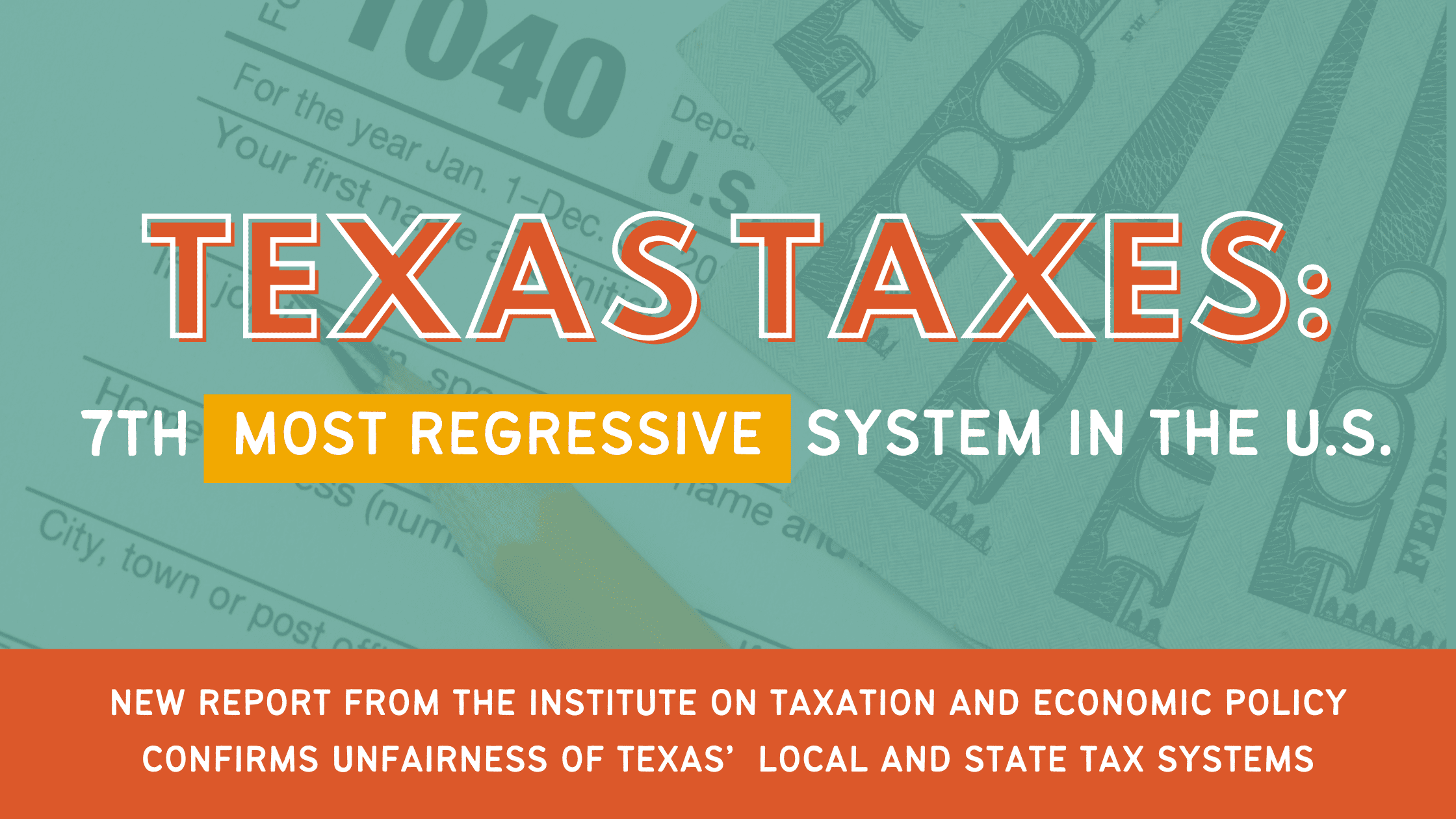Texas’ system is so unbalanced that many Texas families pay a larger portion of their income in state/local taxes than similar families in “high-tax” California.
A comprehensive study by the leading national tax research organization confirms that Texas’ state/local tax system takes a much larger share of income from low- and middle-income households than of higher-income households. The study, by the non-profit, non-partisan Institute on Taxation and Economic Policy (ITEP), concludes that Texas households in the lowest 20% of income – those with incomes less than $21,700 per year – pay 2.75 times the proportion of their income in sales, property, and other Texas taxes compared to families in the top 1% – those with annual incomes over $744,800. Read the full ITEP study here.

In its 50-state study, ITEP measures the effects of each state’s tax system on income inequality. The income disparities in Texas are significantly larger after state and local taxes are collected compared to before. By this measure, Texas has the 7th most regressive tax system in the country.
Several features of Texas’ tax system put a disproportionate share of the responsibility for supporting public services on the lower- and middle-income families that can least afford it. Since Texas lacks a state personal income tax, it relies heavily on sales and property taxes.
The sales tax is particularly unfair, requiring families with the lowest incomes to pay nearly 5.5 times the percentage of their income in these taxes compared to families with the highest incomes. Texas also has a comparatively high reliance on property taxes, which is the largest tax paid by Texans and a key source of support for public education and local government services. The property tax is relatively fair, requiring a similar percentage of income from most families, but the lowest-income families still must pay 1.75 times the percentage of income that the families with the highest incomes do. Many states offer a “circuit breaker” that caps property taxes as a percentage of family income. These programs often protect renters as well as homeowners. Several states also levy a tax on estates or inheritances, though Texas does not take advantage of these tax system avenues to reduce income and wealth inequality.
The Texas tax system is so unbalanced that the 40% of families with the lowest incomes in “low-tax” Texas pay a larger portion of their income than similar families in “high-tax” California. In contrast, the California families most able to contribute to the support of public services pay 12% of their income in taxes, while the wealthiest 1% of Texas families are asked to contribute less than other Texans – only 4.6% of their income.

The Comptroller also produces a study of tax incidence, showing by business sector and family income who pays Texas taxes and who doesn’t. Although the ITEP and Comptroller studies differ in certain specifics, they reach the same conclusion. Texas public services are supported by an unfair tax system that takes the most from those who can afford it the least.
